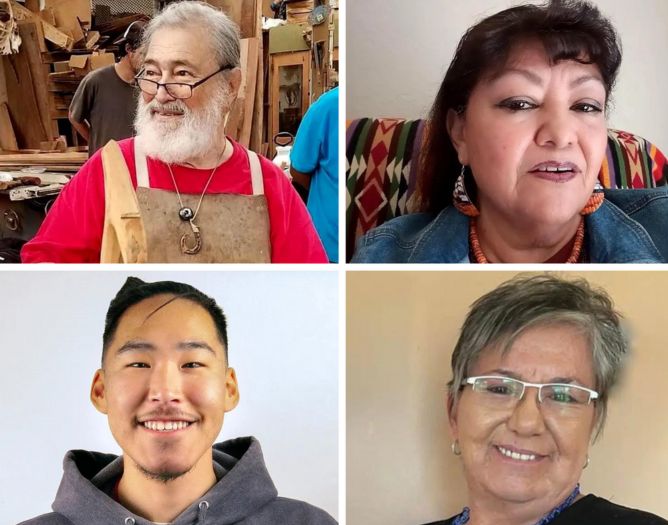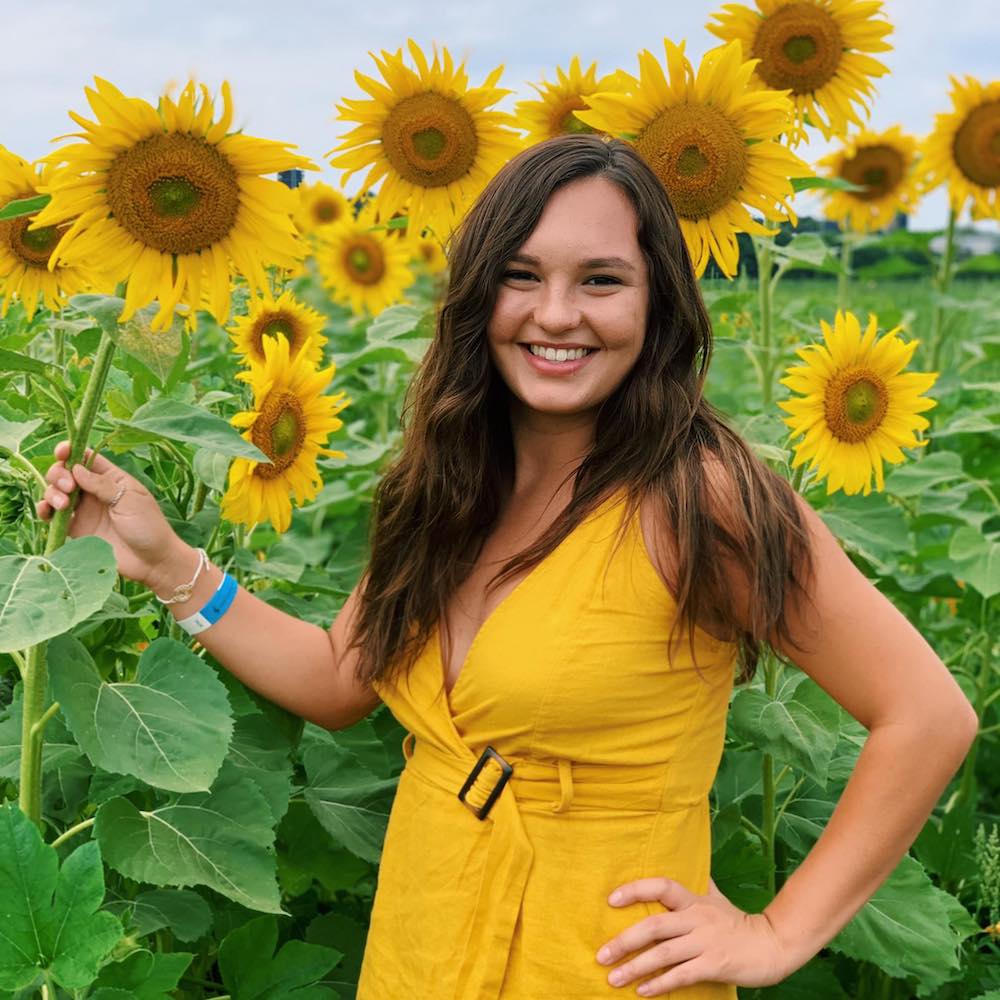
- Details
- By Kaili Berg
Selected through nominations from students, mentees, fellow artists, and community members, each recipient will receive $25,000 for their commitment to safeguarding and advancing Indigenous cultures.
“As pillars of their community, Community Spirit Award honorees’ love for their people is demonstrated through patient and continuous teaching of their art forms and lifeways,” Lori Pourier (Oglala Lakota), President/CEO of First Peoples Fund, said in a press release. “To some, the award acknowledges a sense of urgency to lift potentially lost art forms. To others, the award represents the beauty of seeing ancient art forms flourishing in new ways through songs, dances, celebrations, and other manifestations. To us, the Community Spirit Award represents all of this in addition to giving us the honor of meeting and getting to know the treasured honorees and welcoming them into the First Peoples Fund family.”
Meet the four recipients of the 2024 Jennifer Easton Community Spirit Award:
Sam Ka’ai (Kanaka Maoli): Sam Kaha‘ieuanalio Ka’ai was born on the island of Maui in Hāna, and raised in Wailuku and Waiehu. He was taught wood carving by his granduncle from a young age and later studied drawing, painting, sculpture, and design at the Honolulu Academy of Arts. Over time he became known as a master carver, storyteller, artist, and cultural knowledge bearer. Often referred to as “Papa Sam” now, many items from his personal collection of artwork and artifacts were on display at the Lahaina Historical Museum which was destroyed by the wildfires that affected Maui in 2023. He hopes to mentor the next generation of carvers to help replace some of those items as well as create more pieces himself. Healing has been an ongoing theme in Sam’s life and artwork–often taking the form of bringing forth past cultural values and practices to heal from a colonized mindset. He feels it is of paramount importance that Kanaka have a seat at the table in the restoration of Lāhainā to see that it is imbued with a Hawaiian sense of place for his community and culture to thrive.
Mikelene J. Moquino (Pueblo of Tesuque): Mikelene Moquino comes from the Pueblo of Tesuque in New Mexico and has a profound dedication to the art of pueblo style embroidery. She teaches this artistic expression within her own community and in other neighboring pueblos to keep this traditional art alive for future generations. All of her embroidery is done by hand and most often applied to traditional pueblo clothing used for ceremonial and festive dances. Mikelene works closely with her husband, Randy Moquino, in creating textile works and teaching community members. Many of the items they make tell a story and they are frequently intended to be passed down over generations. Her classes provide spaces where bonds are reconnected between young and old, traditional Tewa language is often the main form of verbal communication.
Golga Oscar (Kasigluk Traditional Council - Yup'ik Nation): Yup’ik Artist, Golga Oscar was born and raised in a rural community called Kasigluk, Alaska. Oscar has successfully produced and led many projects with various mediums ranging from skin sewing, to basket weaving, and quillwork/beadwork/walrus ivory carving exploring Yup’ik Native jewelry. These artforms he pursues are fancy parka/mukluks making, small beach-grass baskets, and different styles of earrings and bracelets. He explores digital photography focusing on the beauty of Native identity as well. He plans to share his skills with people who want to learn about the culture and revitalize their skills towards specific traditional/contemporary clothing. He earned his Bachelor of Fine Arts and Business Entrepreneurship certificate at the Institute of American Indian Art and is now a secondary cultural instructor at Akula Elitnaruvik. Oscar’s goals are to pursue cultural awareness teaching and enter the fashion industry. He aims to showcase the Yup’ik cultural art and bring his Yup’ik identity to recognition in the “American” mainstream.
Sheila Ransom (Akwesasne Mohawk Nation): Sheila Ransom is a member of the Akwesasne Mohawk Nation in northern New York State. She learned about the preparation of materials and weaving techniques from her godmother and other master basketmakers, and it is a tradition she is proud to pass on to others. Basketmaking, in Sheila’s experience, provides a way for her community to come together in a social environment to learn, teach skills, communicate, nurture each other, and share knowledge among different generations. The materials she works with are black ash and sweetgrass, although climate change and invasive species are currently threatening the survival of black ash trees in her ancestral territories. In 2021, Sheila’s Pope Basket was acquired by the Smithsonian American Art Museum and is on display at the Renwick Gallery. This basket was made to honor Kateri Tekakwitha (1656-1680), a Mohawk woman and a basketmaker, who was made a saint by the Catholic Church in 2012. A replica of this basket was gifted to the Pope at that time in honor of the canonization. Sheila has multiple baskets on display at numerous museums throughout the United States and Canada, as well as at the Akwesasne Cultural Center Museum and teaches classes to members of her community.
More Stories Like This
From Dishwasher to Award-Winning Chef: Laguna Pueblo's Josh Aragon Serves Up Albuquerque's Best Green Chile StewRob Reiner's Final Work as Producer Appears to Address MMIP Crisis
Vision Maker Media Honors MacDonald Siblings With 2025 Frank Blythe Award
First Tribally Owned Gallery in Tulsa Debuts ‘Mvskokvlke: Road of Strength’
Zuni Youth Enrichment Project and Partners at Ho’n A:wan Productions Launch 8th Annual Delapna:we Project
Help us defend tribal sovereignty.
At Native News Online, our mission is rooted in telling the stories that strengthen sovereignty and uplift Indigenous voices — not just at year’s end, but every single day.
Because of your generosity last year, we were able to keep our reporters on the ground in tribal communities, at national gatherings and in the halls of Congress — covering the issues that matter most to Indian Country: sovereignty, culture, education, health and economic opportunity.
That support sustained us through a tough year in 2025. Now, as we look to the year ahead, we need your help right now to ensure warrior journalism remains strong — reporting that defends tribal sovereignty, amplifies Native truth, and holds power accountable.
 The stakes couldn't be higher. Your support keeps Native voices heard, Native stories told and Native sovereignty defended.
The stakes couldn't be higher. Your support keeps Native voices heard, Native stories told and Native sovereignty defended.
Stand with Warrior Journalism today.
Levi Rickert (Potawatomi), Editor & Publisher


